Ball Effect System 3 Cushion Billiards Lessons
While learning 3 cushion billiards, pool shots pose new challenges to new players. They cannot decide which thickness ratio and which effect they will give.
This is my system that allows us to find both by doing mathematical calculations. The ball effect system is extremely easy to learn and a very effective system.
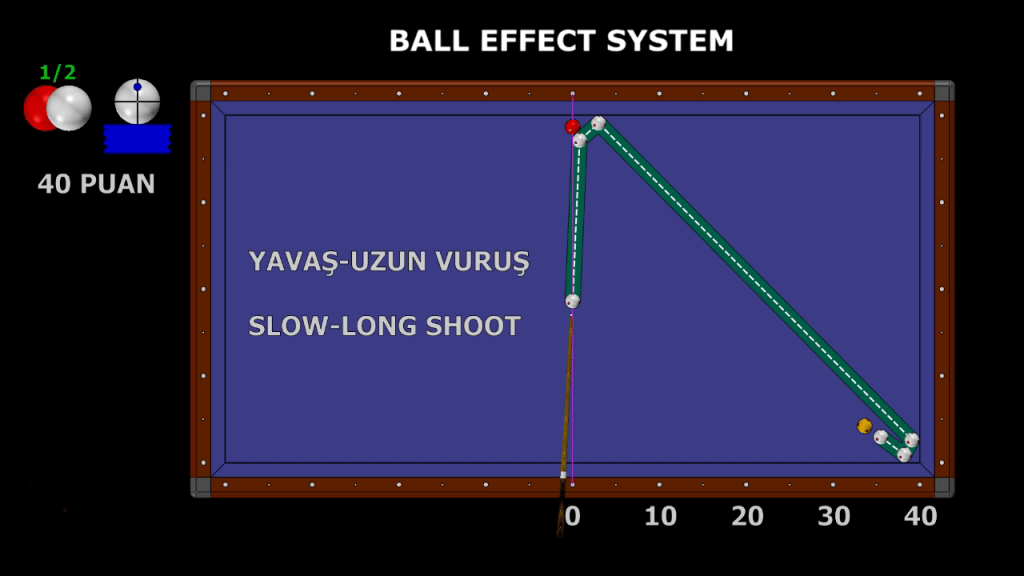
The location of the balls; The cue ball and the shot ball are in the same line.
When we take a slow and long shot with 1/2 hour 12 effect; The cue ball goes 40 points forward. So 4 diamonds.
First, determine the 12 o’clock point. Take a few shots. Place the cue tip in the center of the cue ball. Take the shot position. Look from the center of the cue, draw a line to the outermost edge of the shot ball and don’t miss this line under your eyes while looking at the ball. 1/2. Don’t move at all. bring the cue tip to the clock 12 position and shot.
If the cue ball goes towards the long cushion:
1- Thickness ratio was a thin shot
2- There was a reverse effect
If the cue ball moves towards the first diamond in the short cushion:
1- It was a thick shot
2- Became flat effect
3- It was a quick shot
If you shoot 1/2, no spin, long and with a tempo to go to the corner, the cue ball will go exactly 40 points. (Graphic 1)
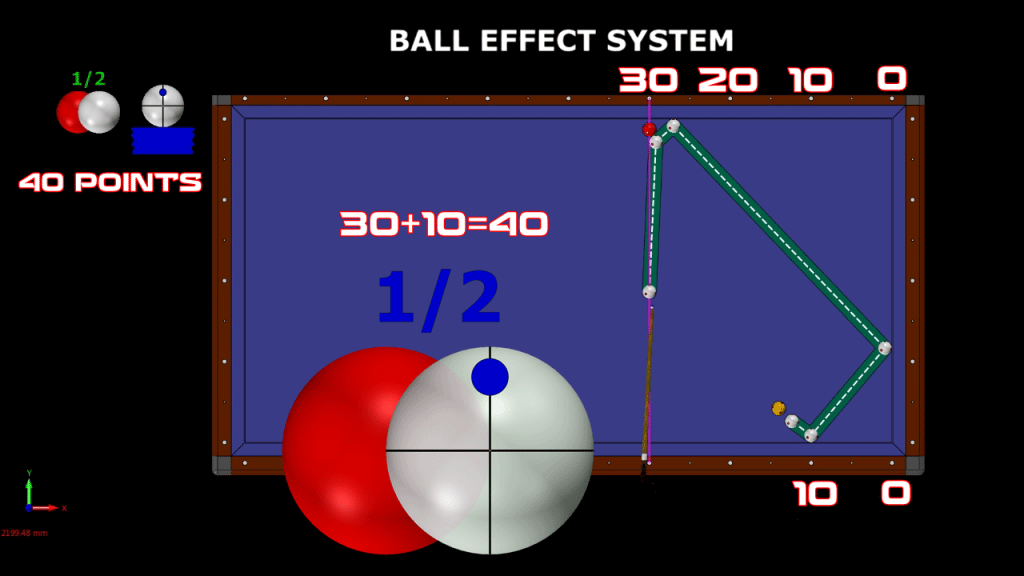
Since we will shoot towards the right, the cue ball and the shot ball stand at 30 points and in the same line from the right corner. The arrival score is 10.
1/2 hour 12 shots 40 points this is our fixed number.
Calculation: We find the effect by subtracting 40 points from the total number of movement of the cue ball.
30 +10 = 40
40-40 = 0 effect (Graphic 2)
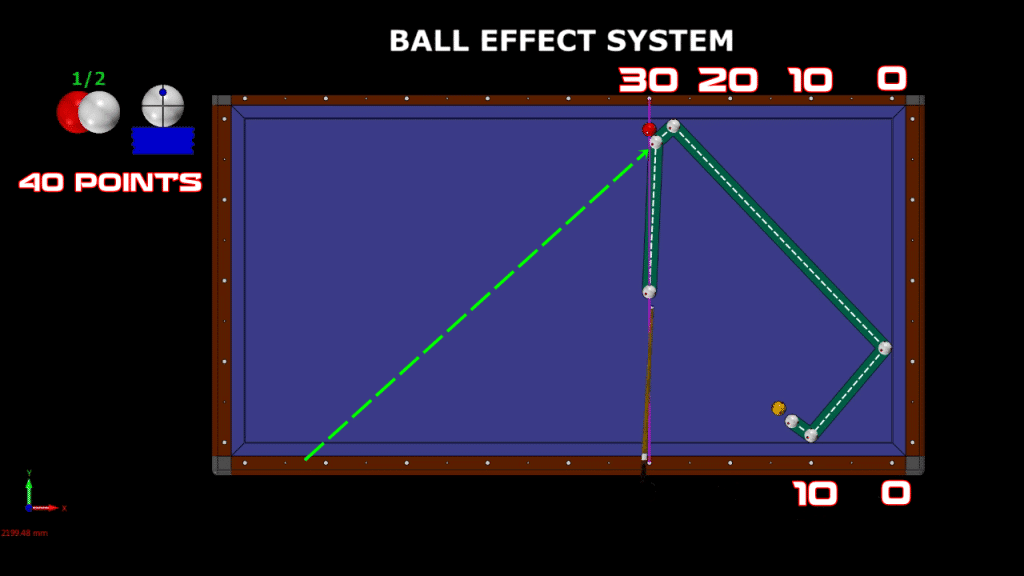
When the cue ball hits the shooting ball, it draws a line towards the long tape. The extension of this line shows the diamond system like start 45. So 2 will make a 2.5 points shortening. So the cue ball has to go to 12, 12.5 points in the short band.
We collect all our concentrate to this point now. I will shoot 12 shots for 1/2 hour and the cue ball will go to 12 points.
How long will be a shot by making a few shots and how much will the pace be. As time passes, we will begin to grasp. (Graphic 3) See: Diamond system steepness coefficients
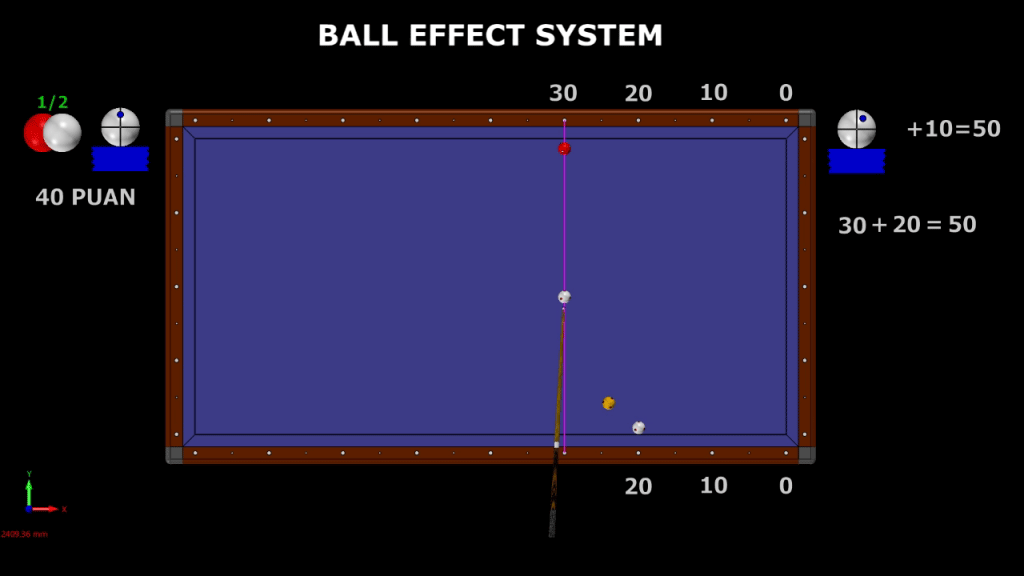
30+20=50, 50-40=10 So we need a 10 point effect. (Graphic 4)
It means +10 points effect every hour (Graphic 5)
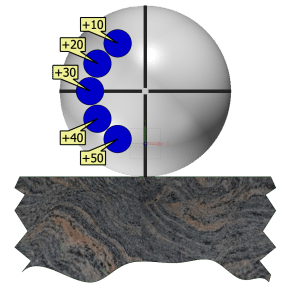
Now that it is an effect shot, there will be a 3-4 point shortening from short cushion to long cushion. A shot that will go to 24 points in the short band. Experiment with the pace of the shot, making a few shots at 1 o’clock. (Graphic 4)
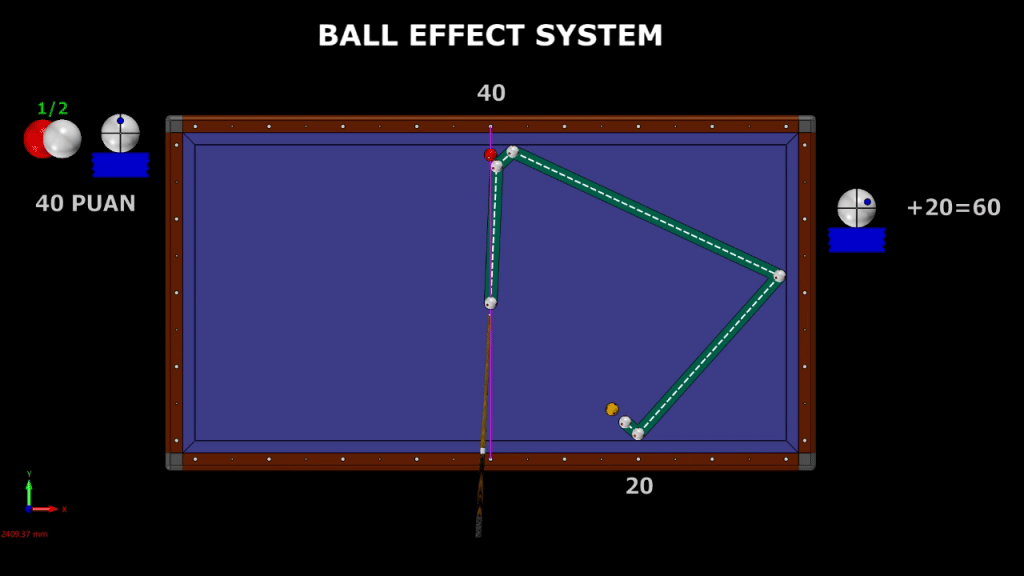
40+20=60, 60-40=20, +20 points effect clock 2
A shot that will go to 23 points in the short cushion. Experiment by making a few shots at 2 o’clock. (Graphic 6)
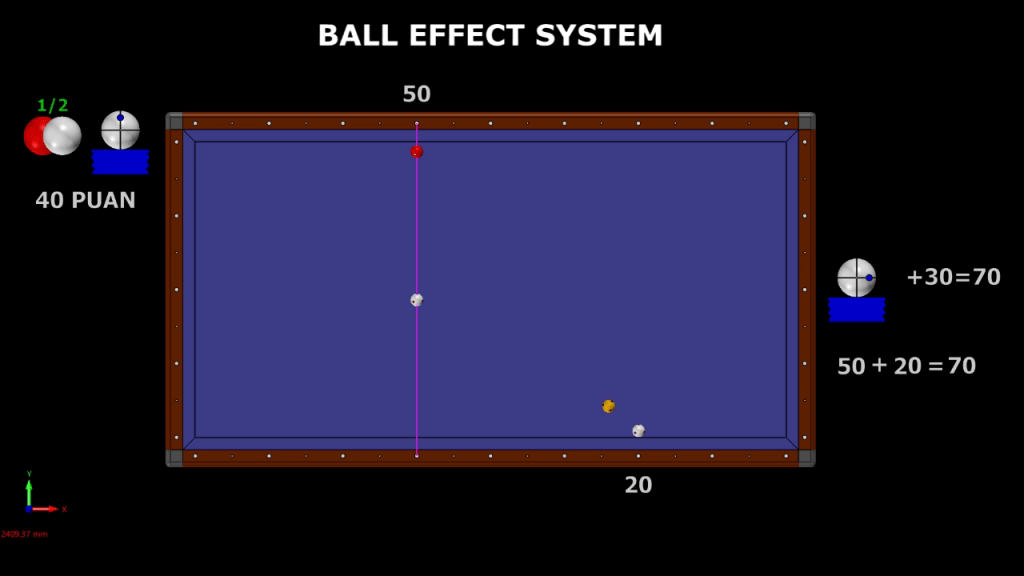
Since there is a shot to the right, we count from the right corner. 10 … 50 arrival 20. 50 + 20 = 70-40 = 30 clock 3 effects
A shot that will go to 24 points in the short cushion. Experiment by making a few shots at 3 o’clock.
If the cue ball goes to 20 points in the short cushion:
1) thinner than 1/2 shot
2) 3 hours is not the maximum effect
If the cue ball goes to 28 points in the short cushion:
1) Thicker than 1/2 shot
2) Clock 3 effects. Too much pressure
3) His beat is fast (Graphic 7)
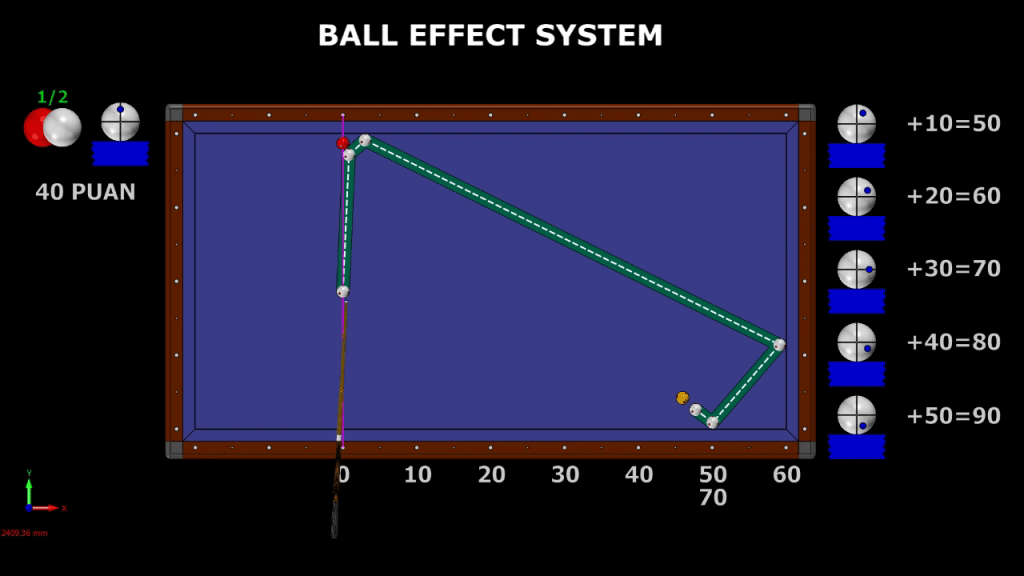
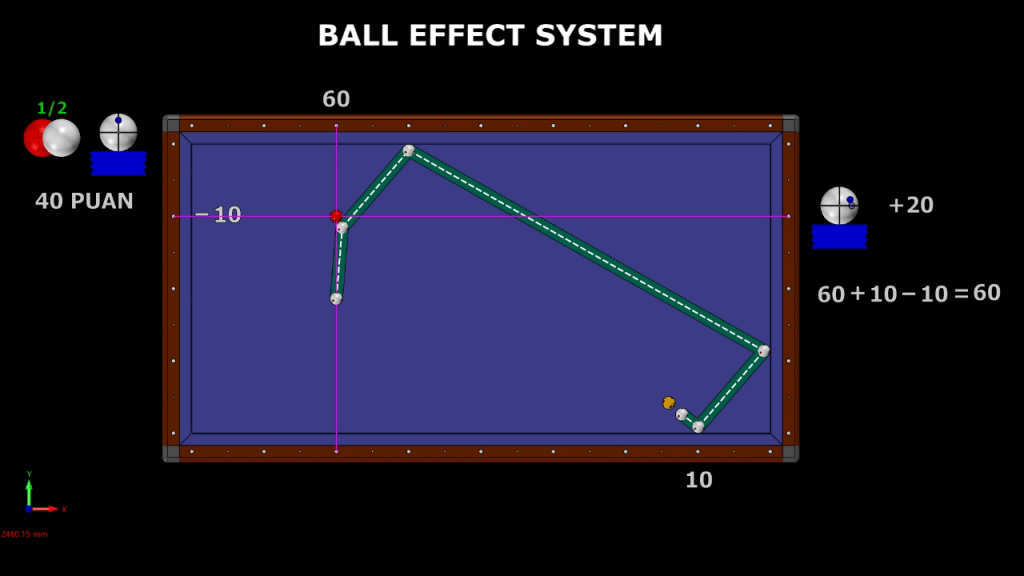
When the shot ball moves away from the long cushion;
When the cue ball hits the shooting ball, since the cue ball moves 45 degrees, it goes further. Since it is within 10 points compared to the short band, we give -10 points effect. (Graphic 9)
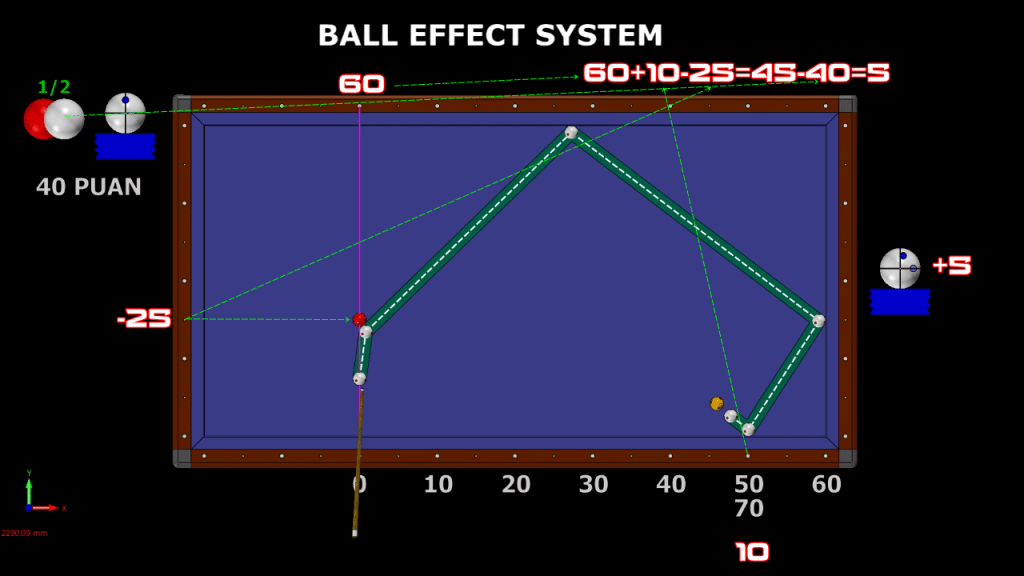
60+10-25-40=5
We did add and subtract and what do we do if our number is 7,5.
1/2 hour 0.5 + light pace or just a little plus effect (Graphic 10)
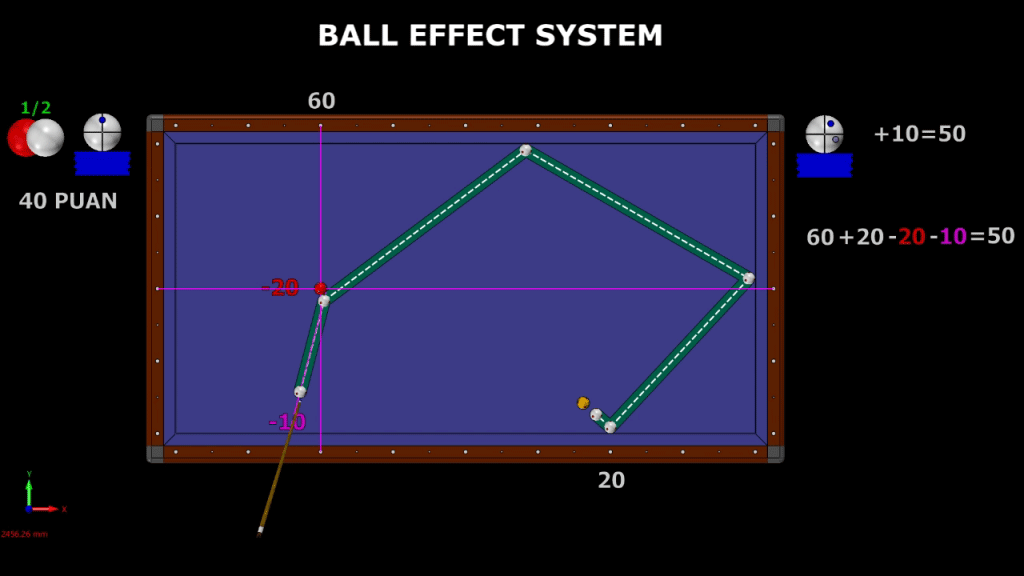
The ball is both 20 points inside and at a straight angle of 5 points.
-10 points for every 5 points angle. (Graphic 11)
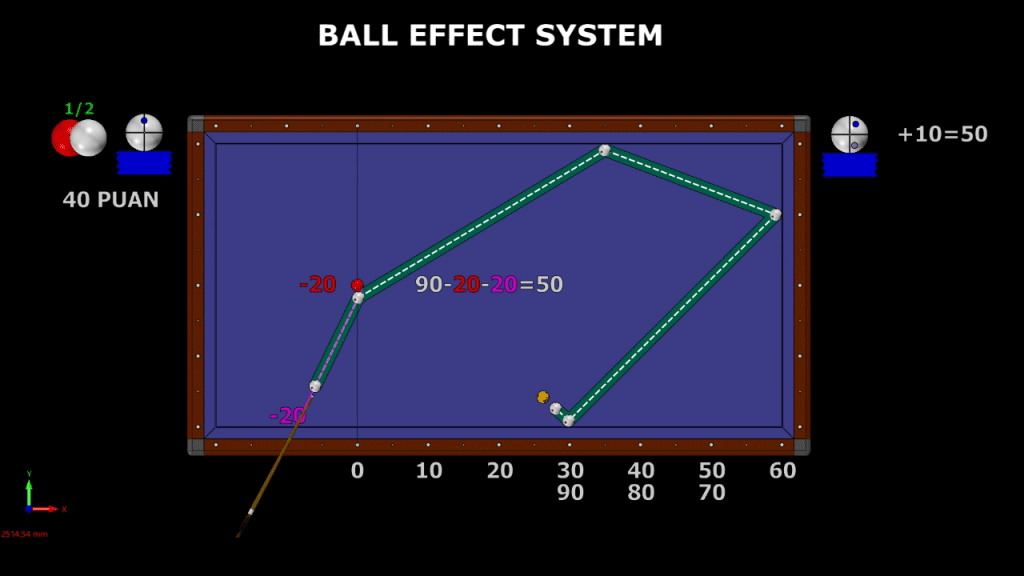
Since the diamond system’s start point is 60, the cue ball will not shorten from the short cushion to the long cushion. (Graphic 12)
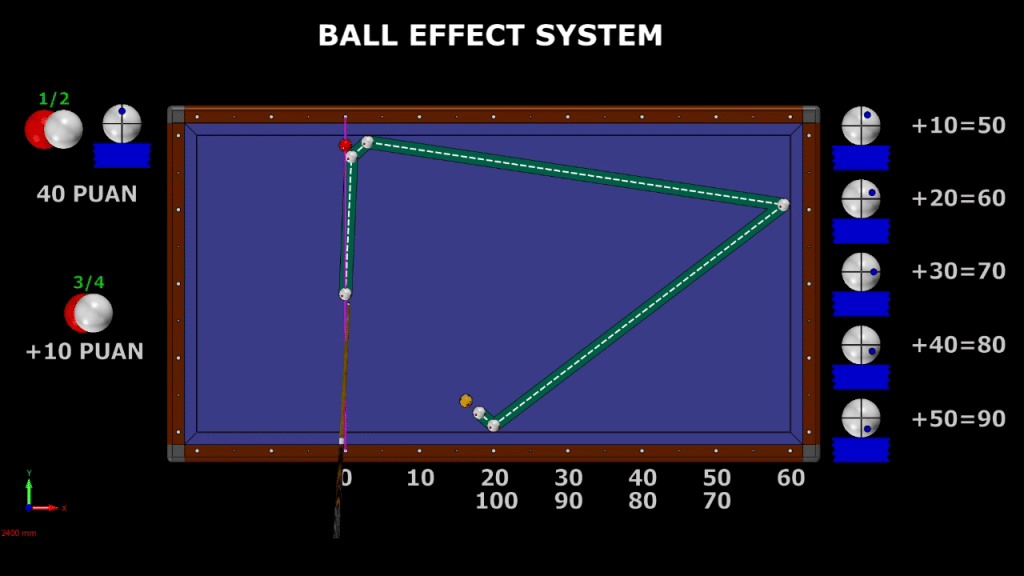
If we need a 100 point shot, the shot should be 3/4, not 1/2.
Since the diamond system has a high start score, the cue ball will not shorten in the short band in the long band, but will go further. Diamond system start point 80 +10 points
If you learn these shortenings and elongations well, you will get excellent results from this system. (Graphic 13)
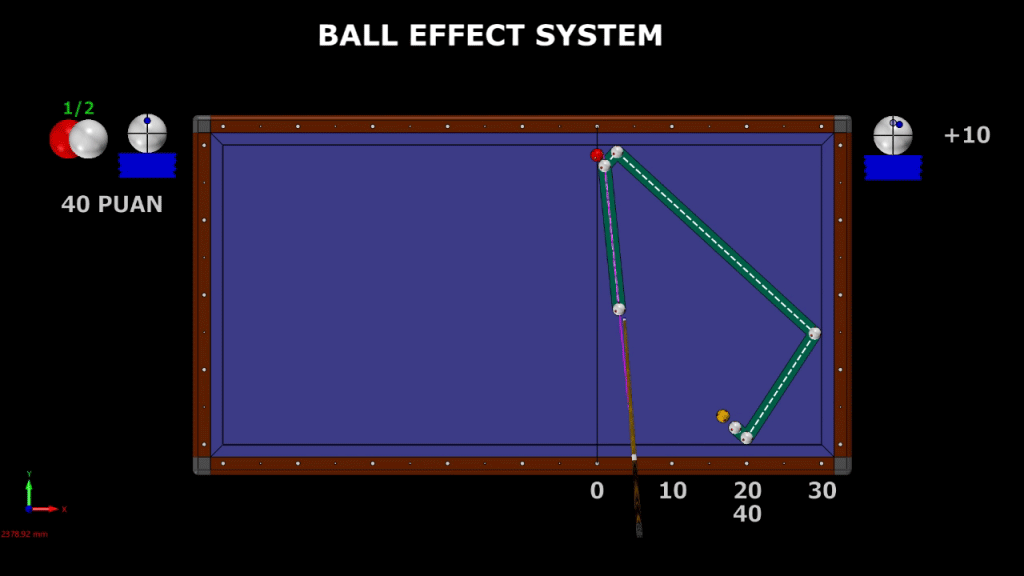
If the cue ball looks at the shot ball 1/2 at a reverse angle of 5 points; For every 5 points, we give +10 points of effect.
Consider the reason why there is a 5 point shortening in the short band to the long band. (Graphic 14)
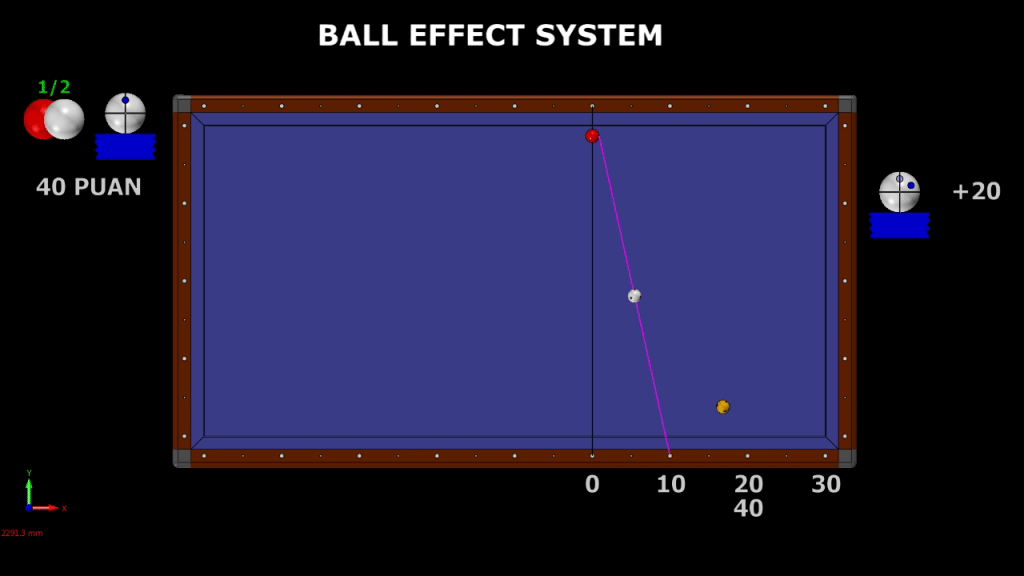
The cue ball looks at the shot ball 1/2.
30+10=40 +20 reverse angle (Graphic 15)
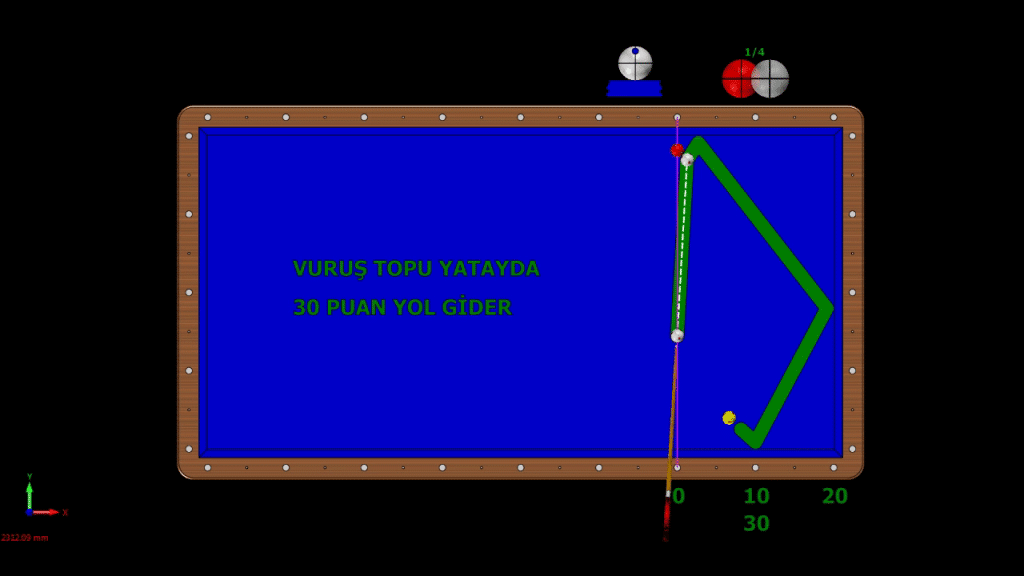
20+10=30
When 30 points are required, the only difference is that we shoot 1/4, not 1/2. (Graphic 16)
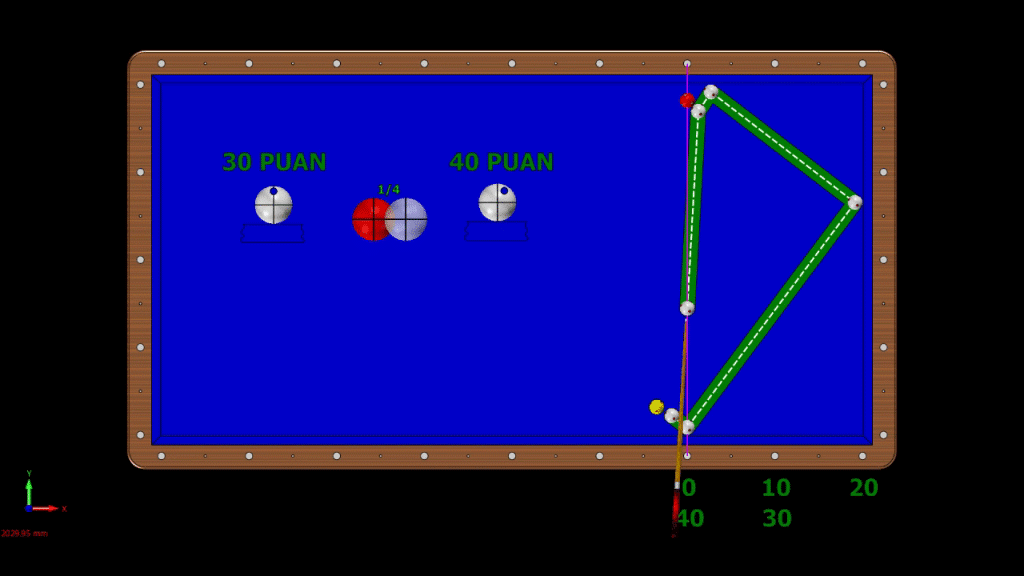
Let’s examine this shot in detail
20+20=40, 1/4 shot 40-30=10 +10 effect clock 1
1/2 shot 40-40=0 clock 12 (Graphic 17)
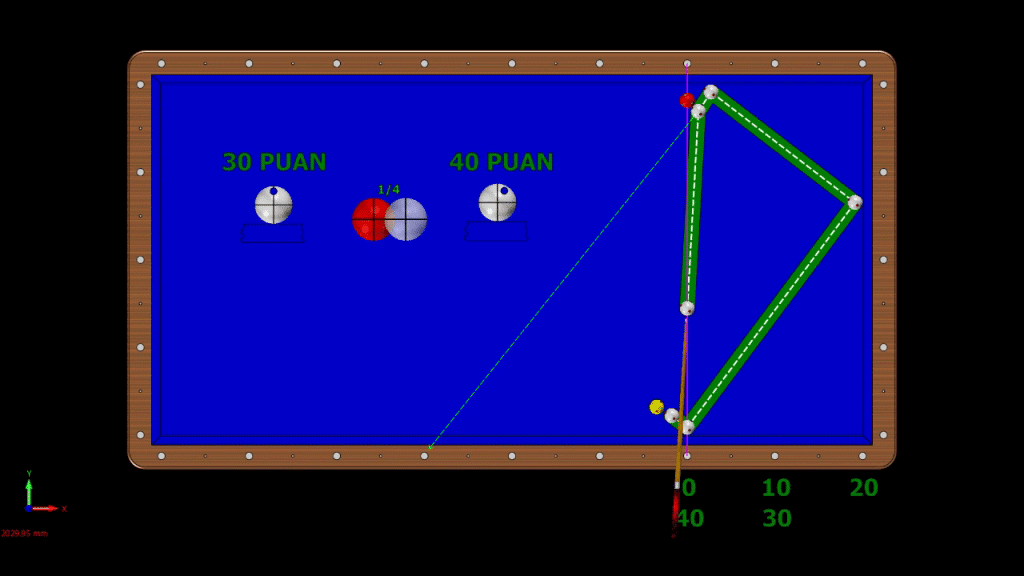
There is a 7, 7.5 point shortening
The cue ball will go to 27 points in the short cushion. It doesn’t matter whether we shot 1/2 shot or take 1/4 shot. Choose the best decision according to your billiard technique and habits. (Graphic 18)
Second video and article to see more. New Ball Effect System 2












